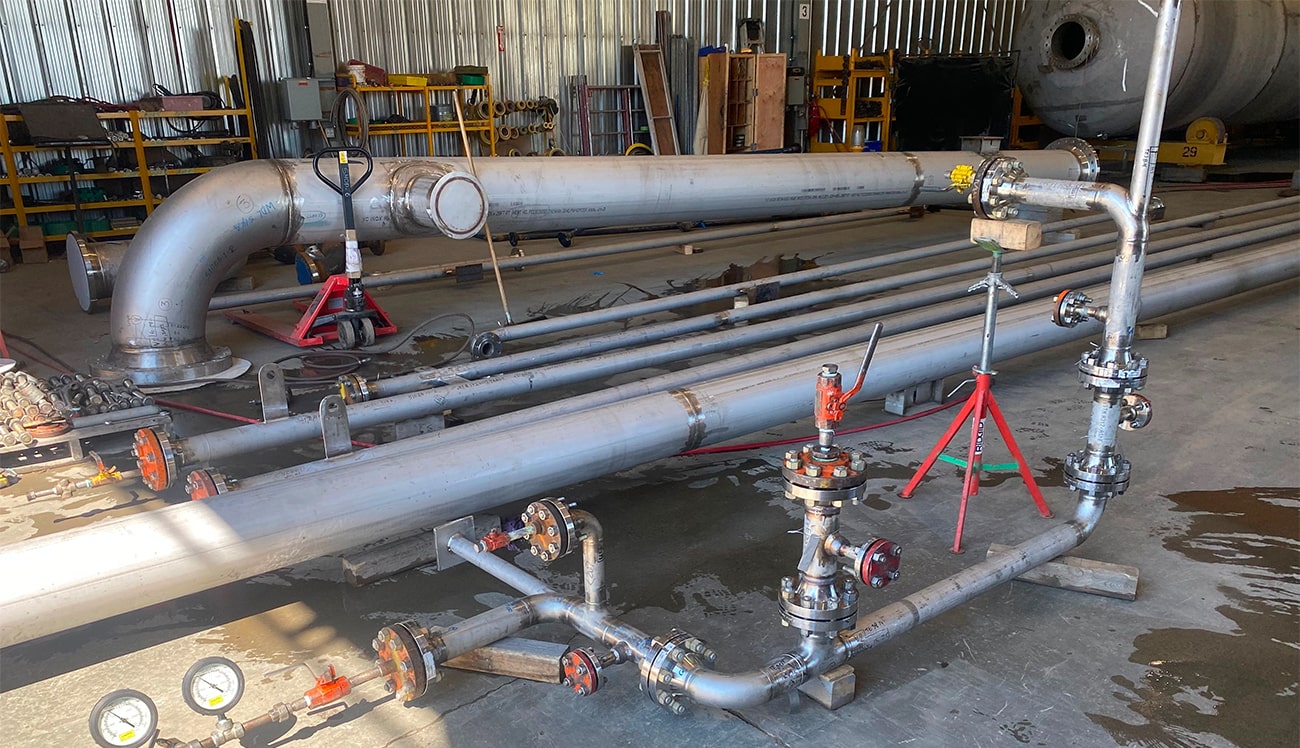Extensive Pipeline Welding Inspection Solutions for Industrialized Projects
Extensive Pipeline Welding Inspection Solutions for Industrialized Projects
Blog Article
Comprehensive Review of Pipe Welding Evaluation Procedures
Pipe welding assessment procedures play a vital function in ensuring that bonded links meet rigorous sector criteria and specs. From meticulous pre-welding examinations to detailed post-weld evaluations, a well-defined inspection procedure is vital for maintaining the architectural sturdiness of pipes.
Pre-welding Examination Preparations
Before beginning the welding process, detailed pre-welding evaluation prep work are necessary to make sure the stability and quality of the weld joint. These prep work entail a precise evaluation of the products to be welded, the welding equipment, and the job atmosphere. By conducting thorough pre-welding examination preparations, potential concerns can be determined and dealt with early on, leading to high-quality and trusted weld joints.
Welding Procedure Credentials
Extensive pre-welding inspection prep work lay the structure for the vital process of Welding Treatment Qualification, making sure the integrity and top quality of the weld joint. Welding Procedure Credentials (WPQ) is an important action in the welding process that includes testing and certifying welding treatments to assure they meet details standards and requirements. The WPQ procedure generally consists of welding treatment specification advancement, welding treatment certification screening, and documentation of the results.
Throughout welding treatment requirements advancement, necessary information such as the welding process, welding materials, joint style, and welding specifications are specified to create an extensive treatment. Ultimately, welding treatment certification screening is conducted to verify the suggested treatment's honesty. This testing commonly includes welding test discount coupons that undergo various mechanical and non-destructive tests to examine the weld's high quality and adherence to the defined criteria.
In-process Weld Assessment
Throughout the welding procedure, in-process weld inspection plays an important function in ensuring the top quality and integrity of the weld joint - Pipeline Welding Inspection. This type of inspection involves keeping track of the welding parameters, analyzing the weld grain development, and detecting any kind of possible issues or gaps as they occur. By conducting in-process weld inspections, welding drivers can without delay resolve any type of issues that may arise, thereby preventing additional defects and guaranteeing that the final weld meets the called for requirements
Typical methods utilized for in-process weld examination include visual assessment, liquid penetrant testing, magnetic bit testing, ultrasonic testing, and radiographic screening. Aesthetic assessment is commonly the very first step at the same time, enabling assessors to aesthetically examine the weld for surface abnormalities such as fractures, porosity, or incomplete fusion. Advanced techniques like ultrasonic screening and radiographic testing give detailed insights into the inner structure of the weld, ensuring that there are no concealed defects that might endanger the weld joint's strength and stability. Overall, in-process weld assessment is crucial for keeping the top quality and reliability of welded pipelines.
Non-destructive Screening (NDT)
Non-destructive Testing (NDT) is an essential you can try here approach employed in pipe welding inspection to analyze the stability of weld joints without causing damage to the welded framework. By making use of numerous NDT strategies, inspectors can review the top quality of welds and identify any type of problems or suspensions that may jeopardize the architectural sturdiness of the pipeline. Usual NDT approaches used in pipe welding evaluation consist of Radiographic Testing (RT), Ultrasonic Testing (UT), Magnetic Particle Testing (MPT), Liquid Penetrant Testing (LPT), and Visual Testing (VT)
RT involves making use of X-rays or gamma see here now rays to create photos of the inner framework of the weld, enabling inspectors to identify defects such as porosity, cracks, visite site or insufficient blend. UT makes use of high-frequency acoustic waves to detect flaws beneath the surface area of the weld, supplying thorough info regarding the size and location of defects. MPT and LPT are made use of to recognize surface-breaking issues by using penetrant liquids or magnetic fragments to the weld location. Additionally, VT entails aesthetic assessment of welds to determine any noticeable blemishes.
Post-weld Assessment and Documentation

Paperwork of post-weld evaluation searchings for is necessary for preserving quality control records and ensuring conformity with industry standards and laws. In-depth reports must consist of information concerning the examination techniques made use of, the location and nature of any type of defects discovered, and any rehabilitative actions taken - Pipeline Welding Inspection. Correct documentation not only works as a record of the weld's top quality yet likewise help in future maintenance and evaluation procedures
Conclusion

In verdict, pipe welding examination procedures play a critical function in making certain the high quality and honesty of welds. On the whole, adherence to correct inspection protocols is key to the success of pipeline welding projects.
From precise pre-welding evaluations to extensive post-weld assessments, a well-defined assessment procedure is crucial for keeping the architectural strength of pipelines. By conducting in-process weld assessments, welding drivers can immediately attend to any type of issues that might emerge, thus stopping more issues and making sure that the last weld satisfies the required specifications.
Usual techniques made use of for in-process weld examination consist of visual examination, liquid penetrant testing, magnetic fragment screening, ultrasonic screening, and radiographic testing.Non-destructive Screening (NDT) is an important method used in pipeline welding assessment to evaluate the integrity of weld joints without triggering damage to the bonded structure. Post-weld assessment entails different approaches to examine the welds for defects, including visual evaluation, dye penetrant screening, magnetic particle testing, ultrasonic screening, and radiographic testing.
Report this page